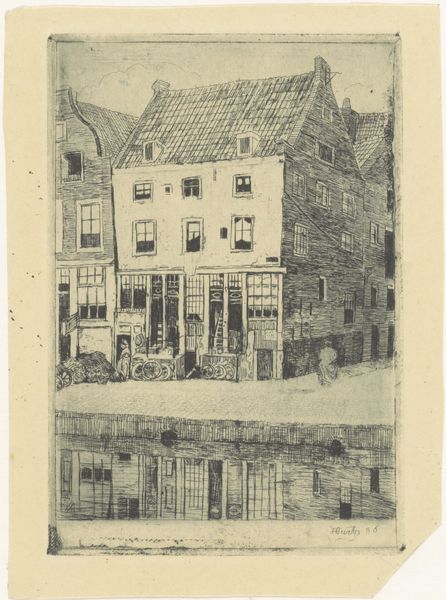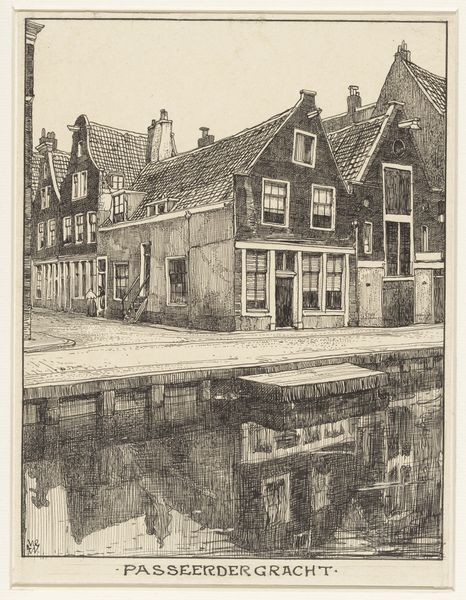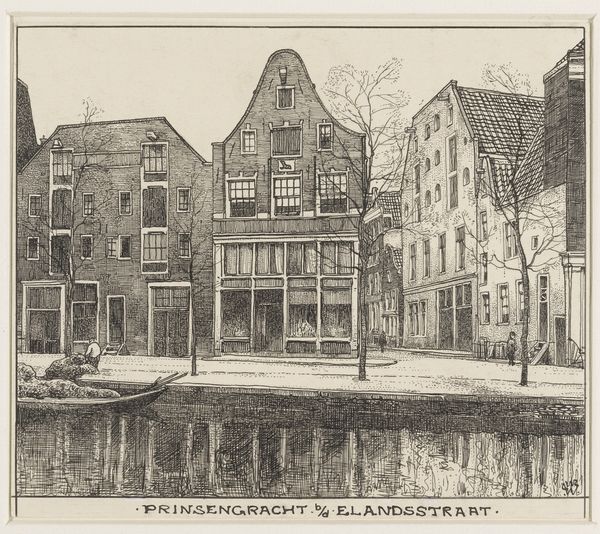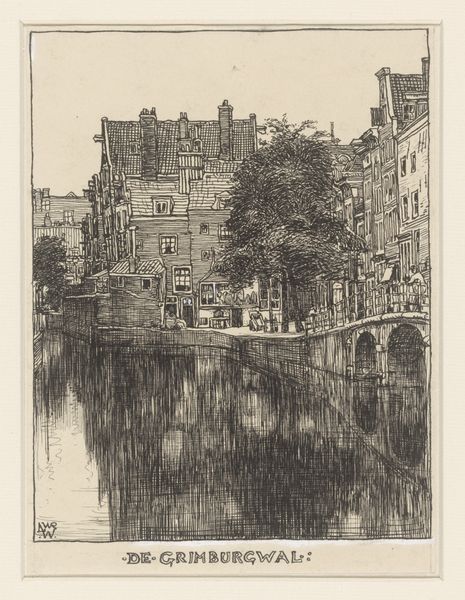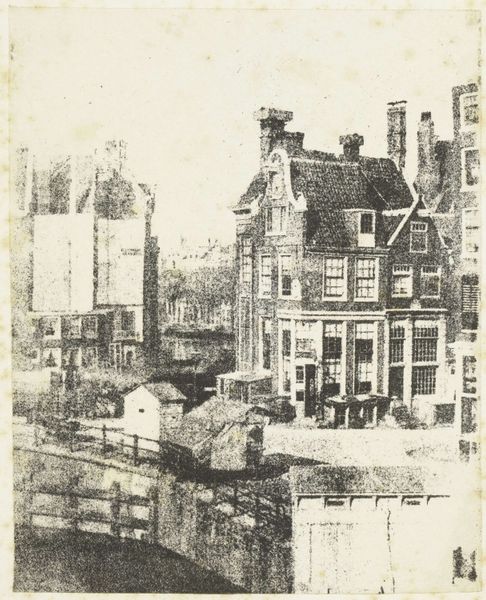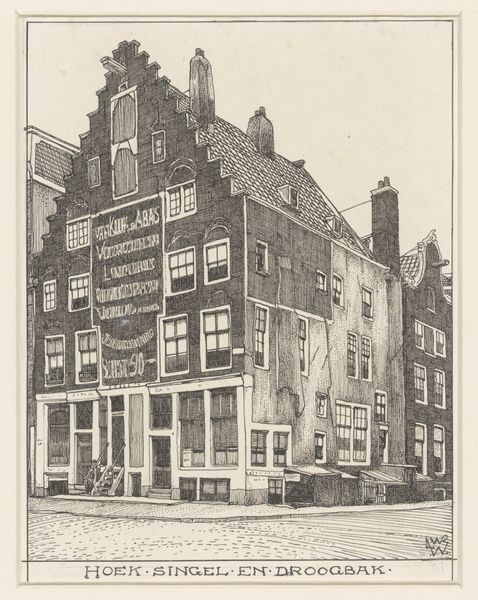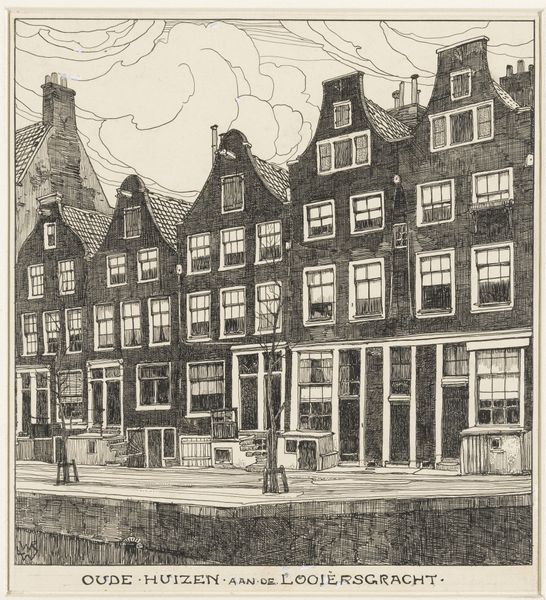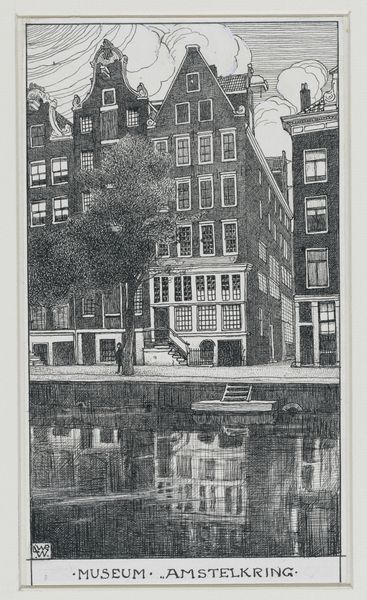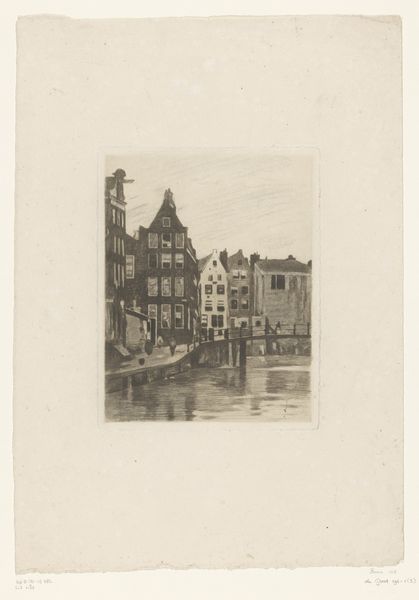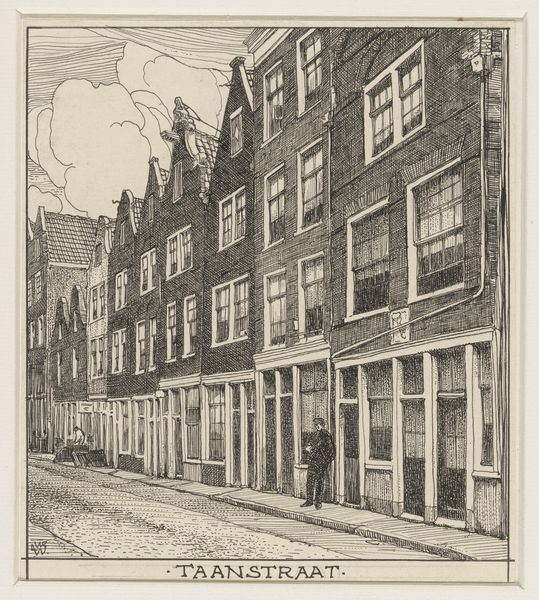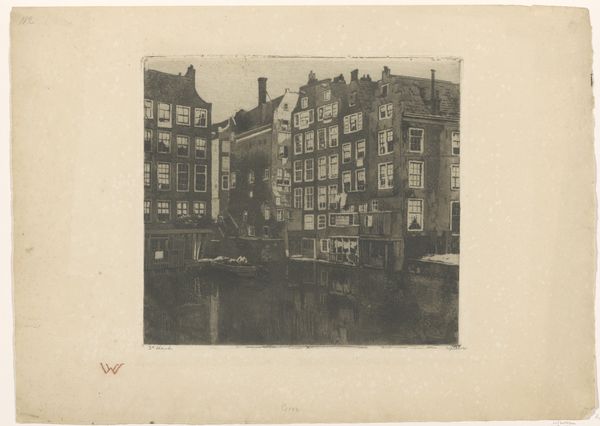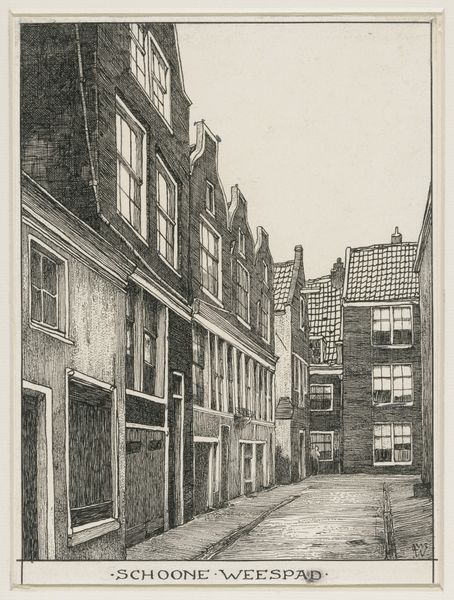
drawing, paper, ink
#
drawing
#
dutch-golden-age
#
paper
#
ink
#
line
#
cityscape
#
genre-painting
#
realism
Dimensions: height 171 mm, width 144 mm
Copyright: Rijks Museum: Open Domain
Curator: Let’s turn our attention to Willem Wenckebach’s, “Baangracht hoek Rozenstraat te Amsterdam.” This drawing, crafted between 1870 and 1926 using ink on paper, captures a canal-side view in Amsterdam. Artist: Immediately, it whispers of old stories. Look at those buildings leaning into each other, sharing secrets across the canal. The stark contrast almost makes it feel like a stage set, ready for a play to unfold. Curator: Indeed. We can view this piece as more than just a pretty picture. Consider the Baangracht and Rozenstraat, arteries of commerce and daily life in Amsterdam during a time of rapid social and economic change. The drawing reflects an intersection of public and private spheres. The canal, historically a crucial route for trade, also mirrors the lives of those residing in its vicinity. Artist: And the reflections in the water... aren’t they curious? Distorted, dreamlike. It’s like the city itself is questioning its own reality. Are we seeing a truthful depiction, or something more subjective, filtered through the artist's feelings? Curator: Well, Dutch Golden Age art, even when striving for realism, frequently promoted civic pride and societal values. This kind of cityscape can show not just how a city looked, but also how it functioned socially. Who lived in these buildings, who frequented the canals – these all spoke to the socio-economic stratification within Amsterdam. It raises questions about who is seen and unseen within the visual narratives of the city. Artist: Mmm, very good point. I’m also thinking about light—see how the light dances on the water? It almost romanticizes what would've been a bustling, probably pretty gritty, urban environment. And is that romanticizing hiding something about how tough things might've been then for many folks? Curator: Precisely! Consider also, whose perspective do we see the city through? Representations like this tend to gloss over inequalities inherent in burgeoning urban centers. However, in the rendering's detail of ordinary people along the canal, there lies a quiet, observational power, resisting total idealization. Artist: Alright, you’ve spun my head! I’ll never look at a canal the same way again. I guess it’s like life—never just one pretty picture. Curator: Agreed. "Baangracht hoek Rozenstraat" offers more than just a glimpse of old Amsterdam; it challenges us to consider the narratives embedded within its lines.
Comments
No comments
Be the first to comment and join the conversation on the ultimate creative platform.
